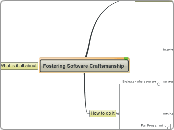People worth admiring radio magazine
Final product
Oral presentation of a power point with the integrated oral texts.
The presentation will not only be evaluated around the final product presented but on the way the students make it public and on the way they explain their choices and products.
Tematic units
Section 4: Text construction
This section and the strategies would be graded through:
- the profile (summarizing)
- the auto biography (text structure)
- the interview (questioning)
Writing an editorial about why is it important to value people
Writing a biography of an academic
Writing an interview to someone in your family
Writing a profile about someone from public life
Writing my autobiography
Section 3: Language strategies
Outlining
Mind mapping
Structuring a text
Questioning
Summarizing
Section 2: Magazine division
Publication sections
Autobiography
Biography
Interview
Profile
Editorial
Population addressed
Children
Young people
Non-academic adults
Academics
Language levels
Literary language
Formal language
Informal language
Section 1: qualities
This section would be evaluated through a justified mind map summarizing the different criteria for the selection
Defining choice criteria
Establishing society's needs
Establishing my personal preferences
Defining qualities
Evaluation
PACI 2
Magazine final product
PACI 1
Introducing the academic orally
Follow up
Interview design
Autobiography process
Profile process
Mindmap
Purpose
To get involved on a critical process leading to a series of texts regarding humanity and positive influences in society through the use of different cognitive, metacognitive and communicative strategies represented in the oral discourse.









